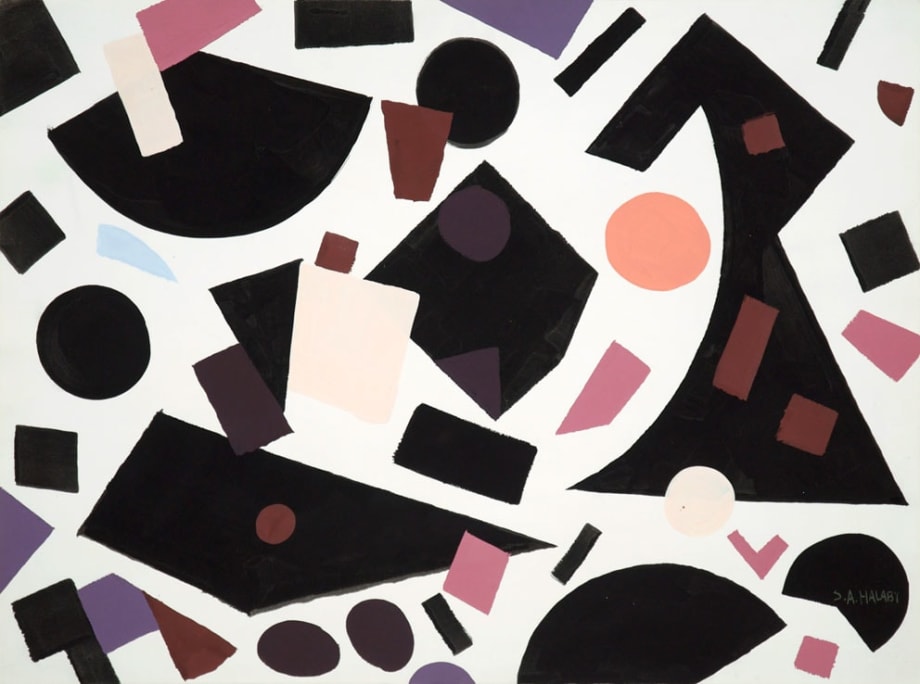Modern-day paper forms are traced back to first-century Chinese official Cai Lun, who revolutionized how it is made. However, some historians claim that Cai Lun’s invention arrived in the Middle East during the eighth century, after Abbasid forces captured Chinese papermakers in present-day Kazakhstan. Utilized in the Middle East since then—for example, as an essential surface in Islamic art—paper has provided painters, draftsmen, and printmakers with endless image-making possibilities, thus shaping a significant subcategory of the region’s art history.
In the Footsteps of Cai Lun II: Selected Works on Paper assembles a group of painters and artists who have used drawing and printmaking as primary media. The exhibition features Tammam Azzam, Nihad Al-Turk, Mohammad Bozorgi, Thaier Helal, Samia Halaby, Athier Mousawi, and Faisal Samra. Through the included works, viewers will discover how drawings, whether created with graphite, charcoal, pastels, or monoprint techniques, rely heavily on the delicate yet sturdy material qualities of paper, a surface that, although unassuming, has a presence on its own, often through texture.
Recent works by Athier Mousawi, Nihad Al-Turk, Mohammad Bozorgi, Khaled Takreti, and Tammam Azzam exemplify how paper continues to be used as a surface that can mirror the implied materiality of an image. While Nihad’s labored portraits of dissident Syrians reveal the manic nature of the painter’s hand as he depicts stylized figures with meticulous detail using a ballpoint pen. Takreti also portrays detailed figures yet does so with oil on paper; in this triptych, the paper’s delicacy emanates serenity. Finally, Azzam’s black and white monoprints resemble photographic negatives, transforming his familiar subject matter into sinister imagery that connotes an alarming sense of foreboding, as they were created shortly before the Syrian conflict.
Samia has always been fond of the medium. For decades, she has relied on it, providing an area of experimentation, studies of color, and spatial composition, early in her career. The chosen works showcase the versatility of the medium, one being a painted silkscreen proof while the other is simply acrylic on paper. Similarly, Athier’s works are studies of color and spatial composition.
Moustafa Fathi’s mixed-media paintings on paper, although applied with a brush, are reminiscent of a monoprint technique that he based on research of textiles in his native Syria. Faisal and Thaier’s works primarily showcase paper’s malleability; the result is conceptual and encompasses gestural abstraction. Assembling these drawings and prints provides a glimpse into essential but often overlooked media.







